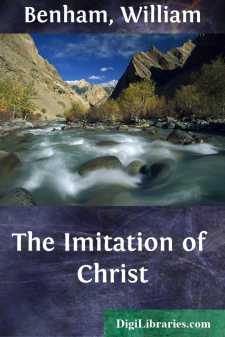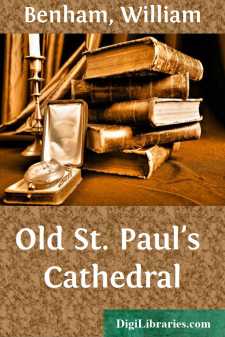Categories
- Antiques & Collectibles 13
- Architecture 36
- Art 48
- Bibles 22
- Biography & Autobiography 813
- Body, Mind & Spirit 142
- Business & Economics 28
- Children's Books 17
- Children's Fiction 14
- Computers 4
- Cooking 94
- Crafts & Hobbies 4
- Drama 346
- Education 46
- Family & Relationships 57
- Fiction 11829
- Games 19
- Gardening 17
- Health & Fitness 34
- History 1377
- House & Home 1
- Humor 147
- Juvenile Fiction 1873
- Juvenile Nonfiction 202
- Language Arts & Disciplines 88
- Law 16
- Literary Collections 686
- Literary Criticism 179
- Mathematics 13
- Medical 41
- Music 40
- Nature 179
- Non-Classifiable 1768
- Performing Arts 7
- Periodicals 1453
- Philosophy 64
- Photography 2
- Poetry 896
- Political Science 203
- Psychology 42
- Reference 154
- Religion 513
- Science 126
- Self-Help 84
- Social Science 81
- Sports & Recreation 34
- Study Aids 3
- Technology & Engineering 59
- Transportation 23
- Travel 463
- True Crime 29
William Benham
William Benham (1831–1910) was an English writer, clergyman, and scholar known for his works on theology, history, and literature. He served as the rector of St. Edmund's, Lombard Street, and later as the vicar of Margate. Among his notable works are "The Dictionary of Religion" and "The Life of Archbishop Tait." Benham also contributed to the editing of "The Authorized Edition of the Letters of Charles Lamb," showcasing his broad literary interests.
Author's Books:
Sort by:
by:
William Benham
Behold, God is mine, and all things are mine! What will I more, and what more happy thing can I desire? O delightsome and sweet world! that is, to him that loveth the Word, not the world, neither the things that are in the world.(1) My God, my all! To him that understandeth, that word sufficeth, and to repeat it often is pleasing to him that loveth it. When Thou art present all things are pleasant;...
more...
by:
William Benham
CHAPTER I. THE BUILDING. Roman London—The Beginning of Christian London—The English Conquest and London once more Heathen—The Conversion—Bishop Mellitus—King Sebert—The First Cathedral—Its Destruction—Foundation of the Second Cathedral by Bishop Maurice—Another Destructive Fire—Restoration and Architectural Changes—Bishop Fulk Basset's Restoration—The Addition...
more...



